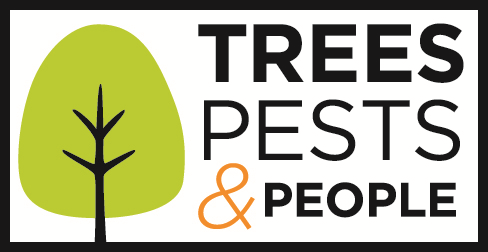NEWS RELEASE — For Immediate Release
NEW DOCUMENTARY ON TREE PESTS TO BE OFFERED TO NATIONAL EDUCATIONAL TELECOMMUNICATIONS ASSOCIATION MEMBERS
The documentary Trees, Pests & People raises awareness of destructive tree-killing invasive pests
Arlington, VA—January 10, 2013—The Nature Conservancy’s new documentary, Trees, Pests & People, will be offered as a National Educational Telecommunications Association (NETA) ACCESS feed for all 96 public broadcasting licensees in 43 states, the District of Columbia and the U.S. Virgin Islands on January 14th at 11am Eastern Standard Time. In this thirty minute documentary, the viewer meets concerned citizens and scientists from all around the country as they talk about their stake in tree health— with focus on what members of the public can do to help protect our forest resources.
“Having Trees, Pests & People on the NETA ACCESS feed will allow this important film to reach PBS viewers nationwide,” said Sarah Volkman, Communications Lead for The Nature Conservancy’s Forest Health Program. “We are very pleased to have our newest documentary included in the 2013 programming.”
From rural family businesses to urban residents, every person in North America is impacted directly or indirectly by invasive forest pests. Trees, Pests & People tells the story of how three different pests are affecting everyday lives in three separate regions of the country. In Missouri, the black walnut tree farms are threatened by the distant spread of thousand cankers disease, while in Florida the avocado growers are trying to slow the effects of newly arrived laurel wilt disease. In Baltimore, Maryland, the emerald ash borer is killing street trees while the city actively works to fight the problem – all the while realizing that the emerald ash borer has already killed millions of ash trees in 18 states.
Created in partnership with The Continental Dialogue on Non-Native Forest Insects and Diseases and the USDA APHIS, Trees, Pests & People illustrates the wide ranging effects that these threats have on our cities, small businesses, and natural landscapes. The film also provides tips on how to recognize and report these threats, showing how actions taken by everyday people can help prevent or minimize the loss of trees. Trees, Pests & People is a story of how America’s scientists, farmers, and city dwellers are all working together to keep trees healthy for decades to come.
“Trees and forests are an essential part of our lives, and they provide shade and shelter, jobs and products, and clean air and water. From tree-lined neighborhood streets to national parks, we count on trees to provide benefits today and for generations to come,” says Bill Toomey, Director of Forest Health Protection for The Nature Conservancy. “That’s why it’s critical for everyone to be aware of what they can do to prevent the spread of destructive tree pests.”
A recent study by the National Center for Ecological Analysis and Synthesis at University of California, Santa Barbara estimated that local governments are spending $2 billion and homeowners $2.5 billion a year for tree removal and replacement, treatment of trees, and lost property value due to introduced non-native forest insects and diseases.
Over the last hundred years, introduced species of invasive insects and diseases have killed tens of millions of trees in forests, cities, and towns across the country. In addition to the emerald ash borer, thousand cankers disease, and laurel wilt featured in the movie Trees, Pests & People, there are many other tree-killing pests including Dutch elm disease, Asian longhorned beetle, Sirex woodwasp, hemlock woolly adelgid, sudden oak death, and others.
Trees, Pests & People highlights how government, citizens, and corporations can close the pathways by which these tree-killing insects and diseases reach America and spread to new areas by working together. These actions can protect our wild and urban forests for the benefit of future generations.
#
To learn more about Trees, Pests & People, visit https://www.youtube.com/watch?v=_j_VSeIykWY&
The Nature Conservancy is a leading conservation organization working around the world to protect ecologically important lands and waters for nature and people. The Conservancy and its more than one million members have been responsible for the protection of more than 18 million acres in the United States and have helped preserve more than 117 million acres in Latin America, the Caribbean, Asia and the Pacific. Visit us on the Web at www.nature.org.





